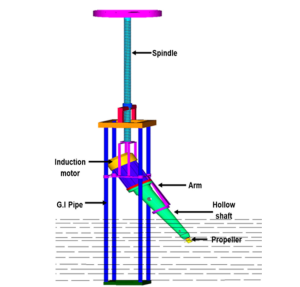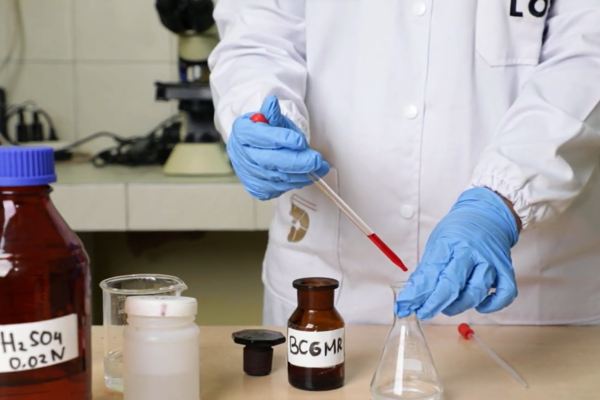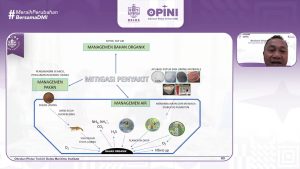12 Equipments for Vannamei Shrimp Ponds that Must Be Prepared
Vannamei shrimp pond equipment is the main thing that must be prepared before carrying out cultivation. This is because each pond must have its equipment and may be used differently.
Both small-scale and large-scale vannamei shrimp farming requires complete pond equipment, from intensive to semi-intensive ponds. Starting from aerators, and laboratory equipment, to equipment that must be in every pond.
So, here is the vannamei shrimp pond equipment that you have to prepare before cultivating:
Also Read: How to Cultivate Vannamei Shrimp from Preparation to Harvest
1. Aerators
The first vannamei shrimp pond equipment is an aerator or water wheel. The aerator plays a role in maintaining dissolved oxygen in the water and controlling the dirt and sludge in each pond.
Several types of aerators include waterwheels with paddle wheels, spiral, pump, vertical, and jet aerators. Meanwhile, the type selection depends on the type of cultivation being carried out.
2. Geomembrane (Plastic Coating)
Geomembrane is a plastic layer used as the bottom of the pond so that pond water does not mix with the soil. This layer maintains air quality to remain clean and not easily polluted.
Usually, the type of geomembrane used is mulch plastic or HDPE with a minimum thickness of 0.50 microns.
3. DO Meters
The DO Meter or Dissolved Oxygen Meter is vannamei shrimp pond equipment that measures dissolved oxygen in pond ponds. During cultivation, farmers must ensure that the supply of dissolved oxygen is at least > 4 ppm so that the shrimp can grow optimally.
4. Refractometer
A refractometer is a tool used to measure salinity in vannamei shrimp ponds. This vannamei shrimp pond equipment is quite important when the pond preparation stage is carried out, namely to measure the similarity of salinity between pond water and water in fry bags.
The optimal salinity level in vannamei shrimp pond water is 15-25 ppt.
5. pH meter
During cultivation, farmers must ensure that the pH of the water is always in optimal conditions. Therefore, a pH meter is needed to measure the acidity level of each pond.
How to use this vannamei shrimp pond equipment is first to take a sample of pond water, and then the pH meter will automatically show the pH number of the water. The optimal water pH for vannamei shrimp is 7.5-8.5.
6. Water Pump
Like water pumps in general, the water pump in vannamei shrimp ponds functions to drain water into the pond during pond preparation. In addition, this water pump also functions to ship the manure from the pond.
Also Read: Vannamei Shrimp Feed Management Tips for Your Anti-Loss Cultivation!
7. Shrimp Nets
Nets or nets are vannamei shrimp pond equipment needed when the harvest arrives. Not only the whole harvest, shrimp nets are also needed during partial harvesting and daily sampling.
8. Anco
Anco is vannamei shrimp pond equipment that must be in every pond. Usually, anco is placed in the corners of certain ponds with a calmer current. Each pond has one to four anco, which are adjusted to the pond area.
9. Siphon Hose
Siphon hoses in vannamei shrimp ponds are useful for sucking up the sludge at the bottom of the pond and draining it into the sewer. To carry out its function, this hose utilizes the force of gravity and water pressure.
In addition, siphon hoses can be used to detect death or if molting occurs in vannamei shrimp.
10. Secchi Disk
The Secchi Disk is vannamei shrimp pond equipment used to measure the turbidity level of water. Turbid pond water can cause oxygen holding capacity to be low, fish visibility to be reduced, and appetite to be disturbed. Of course, this can impact fish growth which becomes less than optimal.
As the name suggests, Secchi disks are circular, resembling discs whose surface is patterned in black and white. How to use it is quite easy, namely by tying it with a rope and putting it in the water. When the pattern on the secchi disk is no longer visible, the water pond’s brightness limit is at that depth.
11. Lighting Lamp
Lighting is one of the pieces of equipment that must exist in a shrimp pond. This lamp is one of the safety equipment that must be available to make it easier for farmers to monitor the condition of shrimp at night.
Usually, the type of lamp used has a wattage that is not too high, and the light needs to be more brightly. This is because shrimp are quite sensitive to light, which can cause stress to the shrimp.
12. AquaHero
The last name shrimp pond equipment is AquaHero. AquaHero is an application that you can operate via a gadget to record and monitor the growth of your shrimp during cultivation.
With AquaHero, you can also record daily water quality, get recommendations for action based on scientific analysis, and get an estimated Break Event Point (BEP) for cultivation.
Also Read: 4 Types of Vannamei Shrimp Farms You Have to Know
Profitable Vannamei Shrimp Cultivation with DELOS!
Preparing ponds can be very confusing. This is because many things must be prepared, including vannamei shrimp pond equipment.
However, there’s no need to worry because DELOS is here to help you prepare for vannamei shrimp farming! DELOS is the best science, technology, and operational management-based aqua-tech company that can help you find new opportunities in the field
Our Farm Management is also integrated with the AquaHero app, making it easier for you to monitor pond conditions daily.
DELOS also has AquaLink, a supply chain program to help our partners get the best products and prices for their shrimp farming.
So, immediately contact DELOS at contact@delosaqua.com or submit your questions via the contact column on our website, www.delosaqua.com. Let’s start vannamei shrimp farming with DELOS!


